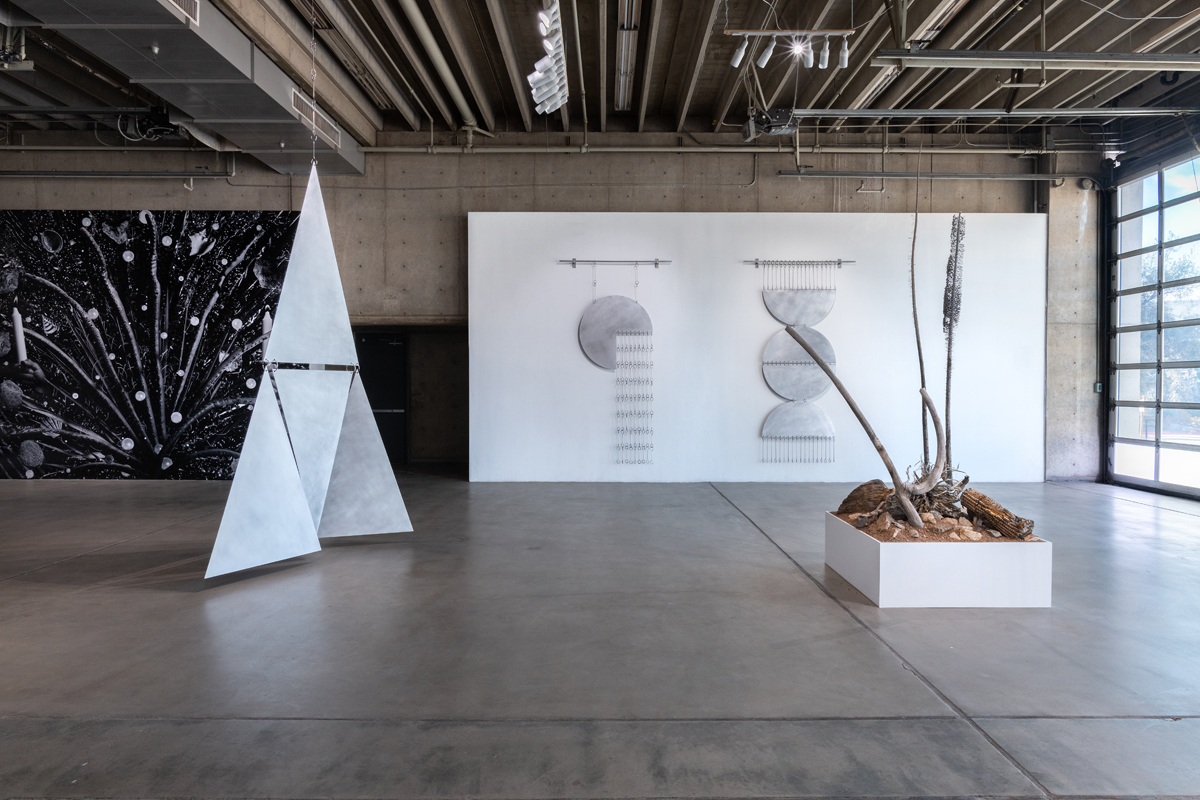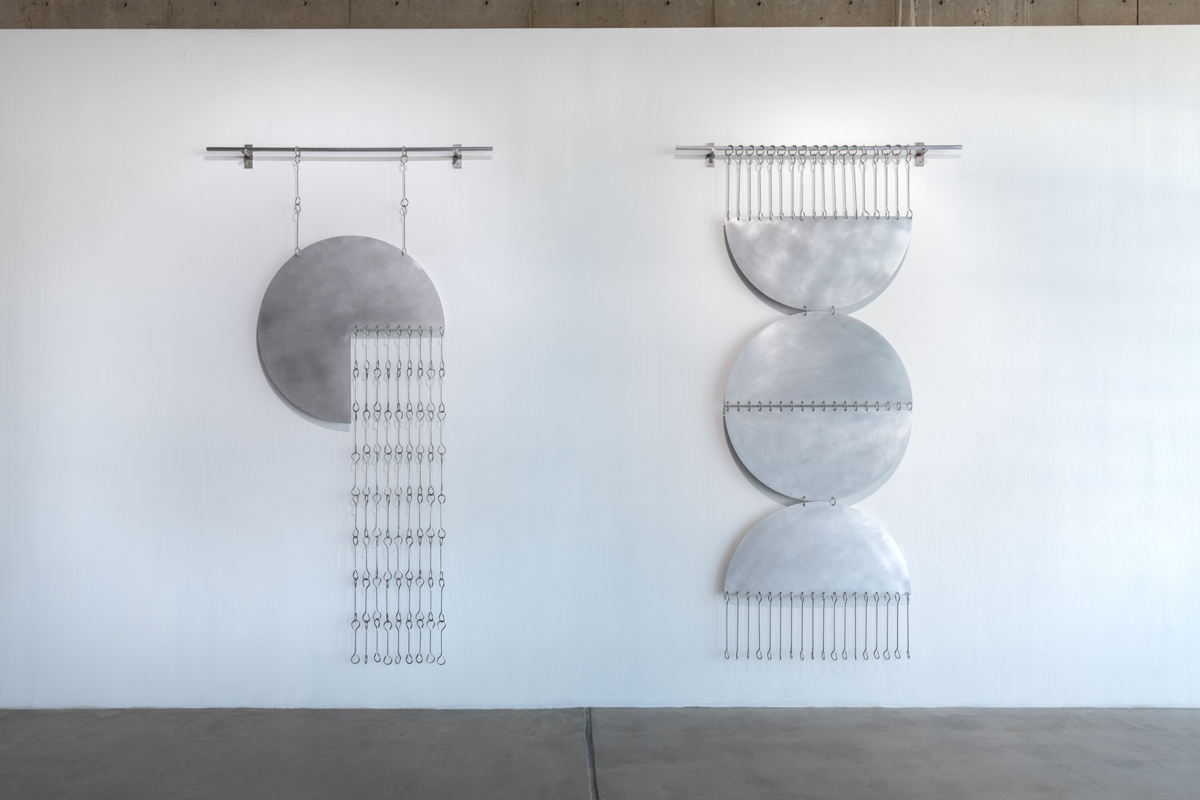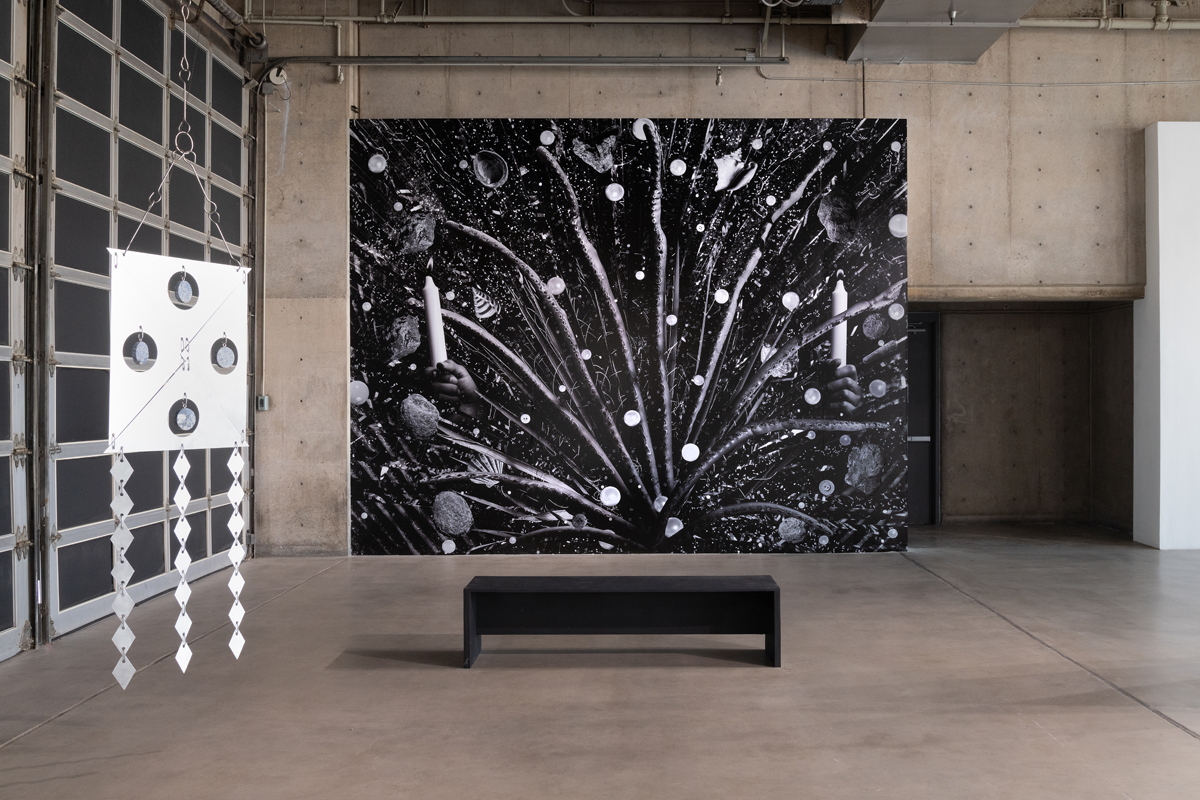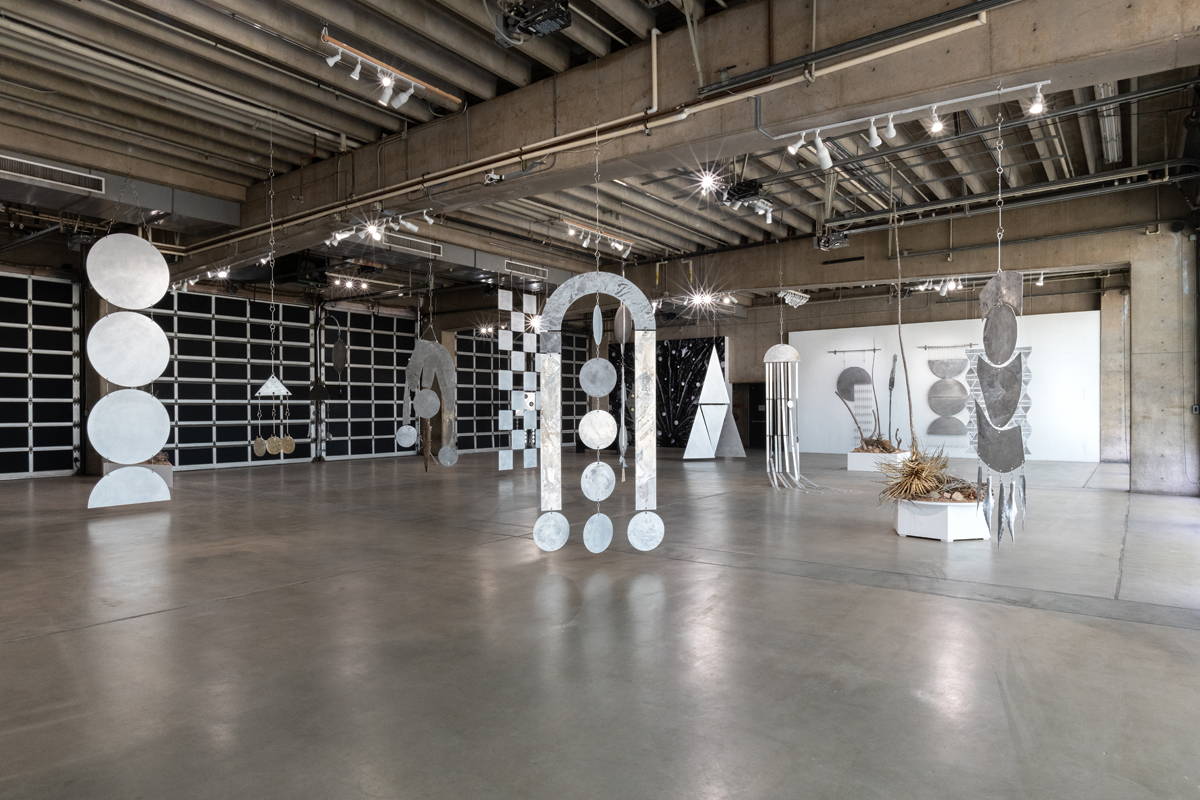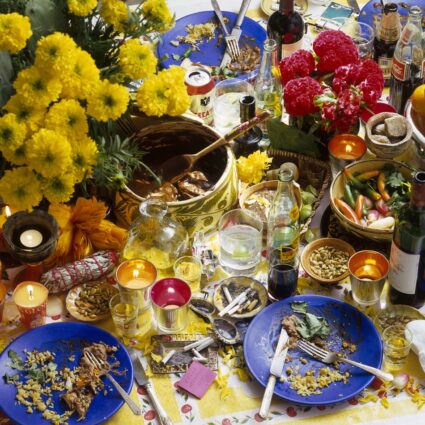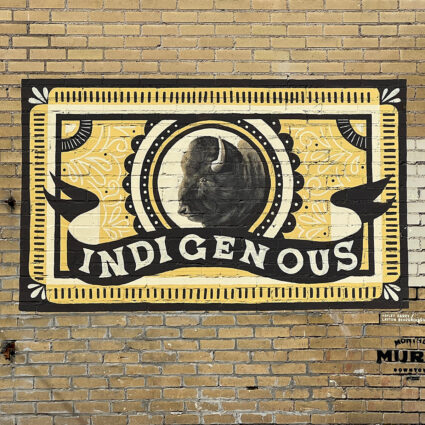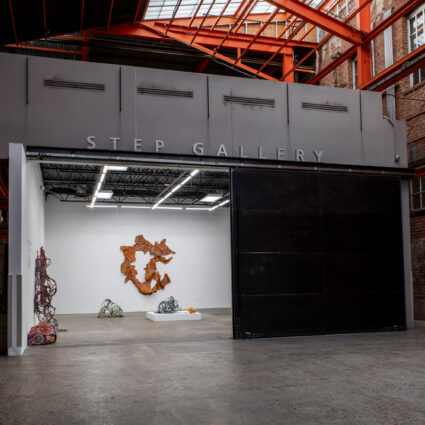PORTALS at the Museum of Contemporary Art Tucson in Arizona features new works by California-based artist Fay Ray, who imagines radical futures in the Sonoran Desert and Southwest borderlands.
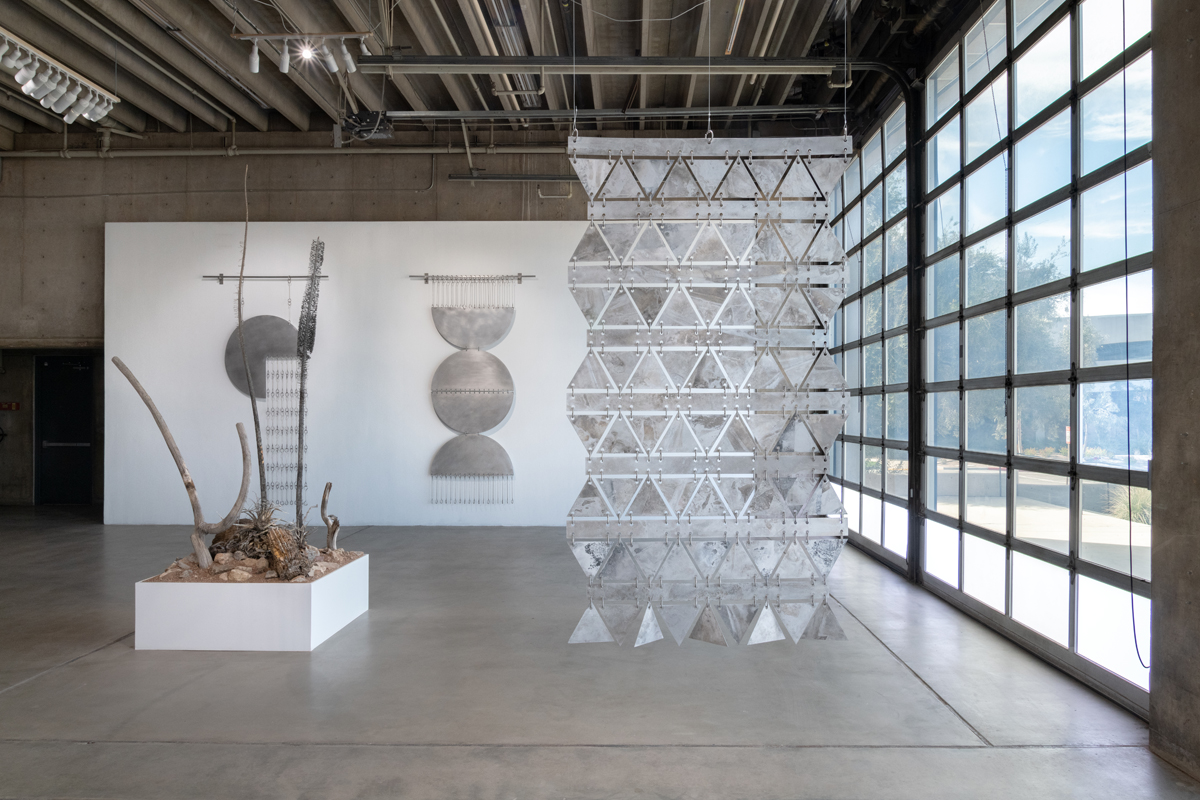
Fay Ray: PORTALS
March 8–September 22, 2024
Museum of Contemporary Art Tucson
Bold geometrics balanced with natural forms float in the expansive brutalist concrete space inside the Museum of Contemporary Art Tucson in Arizona. PORTALS, by California-based artist Fay Ray, prompts a radical reimagining of interior and exterior landscapes within contested regions such as the Southwest borderlands.
The exhibition builds on Ray’s body of work spanning two decades, in which she brings feminist sensibilities and handcrafting techniques to a synthesis of the natural world and spiritual properties. Ten newly commissioned works set her explorations in the context of the Sonoran Desert, where the historical and contemporary context includes the impacts of colonization on land and Indigenous culture.
Notably, this is the artist’s first solo museum exhibition, following years of presenting work internationally in gallery settings. PORTALS was organized by Laura Copelin, deputy director and lead curator of MOCA Tucson, with Alexis Wilkinson, staff curator. Together, they illuminate the desert’s impact on Ray’s creative practice.
Shown in Tucson, large-scale sculptures such as Feelings & Systems (2024) suggest the resource extraction of colonizer culture in the Southwest. The aluminum sheeting Ray uses here references her family’s multigenerational trucking business linking agriculture producers in California, Arizona, and northern Mexico. Meanwhile, Ray’s floor sculptures (El Con I, II, III; 2024), created with various minerals and organic matter, speak to Indigenous relationships with the desert.
Ray’s iconography drawing on symbolism from the occult and traditional religions—seen here in a cross detail for El Gulfo (2018) and a trio of discs in Scorpio, Scorpion, Scorpius (2021)—simultaneously speaks to the role of Catholicism in Mexican and American culture in the Southwest, while indicting Christianity for the genocide of Indigenous people.
While positioning alternative views of Sonoran Desert landscapes, most notably with Mirror Lens Future Crested (2024), a montage of natural and found elements including plant stalks, seashells, rocks, buttons, and a pair of white candles photographed in Tucson, the artist also elevates the possibilities of reimagined interior landscapes. Echoing the title of this powerful exhibition, these works embody portals for manifesting and exploring new realities.
